Categories
- Acid Products
- Automotive
- Bathroom Maintenance
- Carpet
- Chemical Dispensing
- Child Care Products
- Critical Cleaning
- Degreasers
- Dishwashing
- Disinfectants
- Drain & Septic Maintenance
- Dust Control
- FAQ's
- Floor Care
- Food Service
- Furniture
- General Cleaning
- Green Cleaning Products
- Hand Cleaners
- Insecticides
- International Export
- Janitorial
- Laundry
- Lawn Care
- Marine Applications
- News
- Odor Control
- Oil & Gas Industry
- Organic Cleaning Products
- Organizing
- Pet Cleanup
- Rust Treatment
- Safety
- Spas and Saunas
- Swimming Pool Maintenance
- Trash Cans
- Uncategorized
- Window Coverings
Recent Posts
Archives
- January 2026
- October 2025
- June 2024
- August 2020
- April 2020
- September 2018
- May 2018
- April 2017
- March 2017
- September 2016
- April 2016
- March 2016
- February 2016
- January 2016
- December 2015
- November 2015
- October 2015
- September 2015
- August 2015
- July 2015
- June 2015
- May 2015
- April 2015
- March 2015
- February 2015
- January 2015
- December 2014
- November 2014
- October 2014
- September 2014
- August 2014
- July 2014
- June 2014
- May 2014
- April 2014
- March 2014
- February 2014
- January 2014
- November 2013
- October 2013
- September 2013
- August 2013
- July 2013
- June 2013
- May 2013
- April 2013
- March 2013
- August 2012
Contract Writing for the Commercial Cleaning Business
Posted in Carpet, Disinfectants, FAQ's, Floor Care, General Cleaning Leave a comment
How Should I Bid for a One-Time Cleaning Project?
 Often, clients will ask you to do specific tasks that are not in the cleaning contract and understand you will charge additional fees. Clients generally ask for a bid or proposal to do the job. A general rule-of-thumb in the industry is to bill “X” amount of dollars per square foot. In this every-changing industry and because of the economy, the potential to be outbid is highly likely. Many clients will simply go with the lowest bidder, even if the results of the work are poor. Consider several things to create a perfect proposal for a one-time cleaning project.
Often, clients will ask you to do specific tasks that are not in the cleaning contract and understand you will charge additional fees. Clients generally ask for a bid or proposal to do the job. A general rule-of-thumb in the industry is to bill “X” amount of dollars per square foot. In this every-changing industry and because of the economy, the potential to be outbid is highly likely. Many clients will simply go with the lowest bidder, even if the results of the work are poor. Consider several things to create a perfect proposal for a one-time cleaning project.
Continue reading
The Incredible Uses of Denatured Alcohol
 Denatured alcohol has a variety of uses. It’s referred to as “denatured” alcohol because it includes ingredients not made for consumption and toxic if consumed. Not only can it be used as a clean-burning fuel for marine and camping stoves, it works well as a cleaner and sanitizing agent in a variety of commercial and industrial environments. Because denaturing the alcohol doesn’t alter the ethanol molecule, it makes an excellent solvent for many other projects.
Denatured alcohol has a variety of uses. It’s referred to as “denatured” alcohol because it includes ingredients not made for consumption and toxic if consumed. Not only can it be used as a clean-burning fuel for marine and camping stoves, it works well as a cleaner and sanitizing agent in a variety of commercial and industrial environments. Because denaturing the alcohol doesn’t alter the ethanol molecule, it makes an excellent solvent for many other projects.
Worldwide Janitor’s Denatured Alcohol contains Isopropanol and Methanol and is sold in a case of four, 1-gallon bottles. Because it is considered a hazardous material, additional shipping costs will be added to the order when shipped via UPS. Our packaging of this product is the best cost saver for people looking to buy in bulk, large amounts at a time, having it shipped via a freight carrier. Continue reading
How to Maintain Your Commercial Vacuums
 Vacuum cleaners are often one of the most expensive purchases for any cleaning business. They’re often the one piece of equipment used daily or more frequently than other equipment. Depending on the environment the commercial vacuum is used, the vent can release musty smells because of the dust and debris it picks up over time. To extend the life of your commercial vacuum cleaners and lessen those smells, they should be properly maintained on a routine basis, which only requires a few simple steps. Continue reading
Vacuum cleaners are often one of the most expensive purchases for any cleaning business. They’re often the one piece of equipment used daily or more frequently than other equipment. Depending on the environment the commercial vacuum is used, the vent can release musty smells because of the dust and debris it picks up over time. To extend the life of your commercial vacuum cleaners and lessen those smells, they should be properly maintained on a routine basis, which only requires a few simple steps. Continue reading
The Many Uses of Ammonia
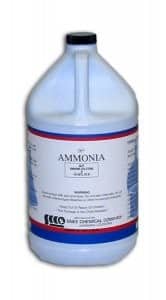 Ammonia is a cheap cleaning agent that has many uses. This includes industries such as commercial cleaning, commercial kitchens, farming and other industrial facilities. Its pungent smell makes us not use it, but the smell dissipates in a short amount of time. Ammonia has gotten a bad rap, because it often does a better job than most cleaners, even when it’s diluted with water. Worldwide Janitor provides a complete line of ammonia products at wholesale prices, including Pure Ammonia and Odorless Ammonia.
Ammonia is a cheap cleaning agent that has many uses. This includes industries such as commercial cleaning, commercial kitchens, farming and other industrial facilities. Its pungent smell makes us not use it, but the smell dissipates in a short amount of time. Ammonia has gotten a bad rap, because it often does a better job than most cleaners, even when it’s diluted with water. Worldwide Janitor provides a complete line of ammonia products at wholesale prices, including Pure Ammonia and Odorless Ammonia.
Although ammonia is used and available in the commercial and retail industries, certain precautions should be taken. Never mix or store ammonia with bleach or any other chemical, as it will create toxic fumes. Do not breathe in the vapors of ammonia and always wear protective clothing when using it – especially gloves. PPE is recommended for Pure Ammonia. Always store ammonia in an area that requires key access. If you cannot store it in a locked area, label the bottle as toxic so no one else uses it, such as employees at your client site. To ensure the safety of your clients and their employees, keep the product off site. Because Pure Ammonia is considered a hazardous material, shipping will require additional fees. Continue reading
How to Train Your Employees to Save You Money
 Most commercial, janitorial and house cleaning companies require employees to work at different clients’ sites. As the business owner, you or your managers can’t be at every client location at once. Worldwide Janitor’s library touches on topics such as “How to Use Dilution Ratios” and training employees. There are other ways to save your business time and money to ensure your employees are trained and do the job properly, whether you or your clients pay for the cleaning products. Continue reading
Most commercial, janitorial and house cleaning companies require employees to work at different clients’ sites. As the business owner, you or your managers can’t be at every client location at once. Worldwide Janitor’s library touches on topics such as “How to Use Dilution Ratios” and training employees. There are other ways to save your business time and money to ensure your employees are trained and do the job properly, whether you or your clients pay for the cleaning products. Continue reading
The Astonishing Benefits of Natural Pine Oil
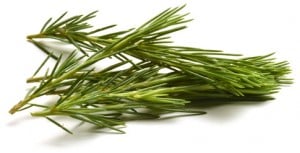 Pine oil comes from pine tree needles, including the dwarf pine, long leaf pine, Scotch pine and Norway pine. The pine oil is extracted through steam distillation of the fresh needles from these trees. Pine oil has been known for centuries for its many uses. It can be used as a cleaner, disinfectant, air freshener and insect repellent. Some of our customers in particular, say that it “works amazing for fly problems,” – knocking them right out of the air, and keeping them at bay because they hate the smell of it so much.
Pine oil comes from pine tree needles, including the dwarf pine, long leaf pine, Scotch pine and Norway pine. The pine oil is extracted through steam distillation of the fresh needles from these trees. Pine oil has been known for centuries for its many uses. It can be used as a cleaner, disinfectant, air freshener and insect repellent. Some of our customers in particular, say that it “works amazing for fly problems,” – knocking them right out of the air, and keeping them at bay because they hate the smell of it so much.
You may remember pure pine oil in your grandmother and great-grandmother’s cupboard for cleaning. Commercialization of pine oil over the years in different cleaning products has greatly reduced the understanding of the benefits of pure pine oil because of the multitude of products with different concentrations, and in some cases, artificial perfumes – that have no actual pine oil at all. Good, old-fashioned pine oil can still be used in a variety of applications more effectively than other cleaners, even in today’s world.
The history of pine oil speaks for itself. The development of pine oil cleaning products started as early as the 1920s. Commercialization of pine oil cleaning products started as early as the 1950s. Today, most commercial “pine” products contain about 3% pine oil or have no pine oil in them at all – only pine scented perfumes. Very few products on the market today include pine oil as an active ingredient, although they advertise “pine” in their logos.
Although no cleaning product is free of hazards; pine oil is generally safe if used properly. Like any other heavy-duty cleaner, precautions should be taken when using pine oil. Read the directions for each product carefully and follow the suggestions on how to use pine oil. Continue reading
How to Use Critical Cleaning Products
 An increasing elderly population has led to a variety of new health care settings and growth in pharmaceutical manufacturing. It also increased the demand for those who do these types of jobs, according to the Bureau of Labor Statistics. As technology advances, it’s led to the opening of acute care, outpatient care, ambulatory and community-based care settings and an up-tick in the pharmaceutical manufacturing industry. Facilities used for any type of medical care, medical or pharmaceutical manufacturing require the use of cleaning products that are approved by state and federal authorities. These agencies not only require that the products are approved, but also that specific cleaning guidelines are followed. Worldwide Janitor offers a complete line of Alconox products, which are distributed and used in these industries. Continue reading
An increasing elderly population has led to a variety of new health care settings and growth in pharmaceutical manufacturing. It also increased the demand for those who do these types of jobs, according to the Bureau of Labor Statistics. As technology advances, it’s led to the opening of acute care, outpatient care, ambulatory and community-based care settings and an up-tick in the pharmaceutical manufacturing industry. Facilities used for any type of medical care, medical or pharmaceutical manufacturing require the use of cleaning products that are approved by state and federal authorities. These agencies not only require that the products are approved, but also that specific cleaning guidelines are followed. Worldwide Janitor offers a complete line of Alconox products, which are distributed and used in these industries. Continue reading
Posted in Critical Cleaning, Degreasers, Disinfectants, FAQ's, Hand Cleaners Tagged Alconox Case of 12 Dispenser Boxes, Alconox: Powdered Precision Cleaner, Alcotabs: Critical Cleaning Detergent Tablets, Economical Pink Hand Soap, Liquinox: Critical Cleaning Liquid Detergent, Power Sep Antiseptic Hand Soap Leave a comment
How to Use Dilution Ratios
 Many businesses use too much of their cleaning products and supplies to do simple jobs. Products have dilution ratios, which clean a variety of surfaces using as little as one capfull per gallon. Properly cleaning using the manufacturer’s suggested dilution ratios saves you money. Employees don’t understand the dilution ratios and frequently use much more product than required, thinking it will assist in getting surfaces cleaner and require less work. Not only do dilution ratios save money, they do a better job on specific surfaces.
Many businesses use too much of their cleaning products and supplies to do simple jobs. Products have dilution ratios, which clean a variety of surfaces using as little as one capfull per gallon. Properly cleaning using the manufacturer’s suggested dilution ratios saves you money. Employees don’t understand the dilution ratios and frequently use much more product than required, thinking it will assist in getting surfaces cleaner and require less work. Not only do dilution ratios save money, they do a better job on specific surfaces.
Floors
Most floor cleaners are best used with hot water and the dilution ratio recommended by the manufacturer. Using too much of the cleaner can cause streaks, especially on specific floors types, such as marble and hardwood floors. Diluting the product using Worldwide Janitor’s All-Purpose Neutral Cleaner, allows you or your employees to avoid cloudy-looking floors and streaks. Continue reading
Posted in Bathroom Maintenance, Dust Control, FAQ's, Floor Care, General Cleaning, Green Cleaning Products, Janitorial, Laundry, Uncategorized Tagged 18" Heavy-Duty Moss Squeegee, All-Purpose Neutral Cleaner, Daybright Bleach, HTD Heavy Duty Detergent, Streak Free Non-Ammoniated Window Cleaner Leave a comment
What is an MSDS Sheet?
 An MSDS (Material Safety Data Sheet) provides the ingredients and toxicity of different products consumers and businesses purchase. This includes household, janitorial and industrial cleaning products. MSDS sheets also include information regarding storage and disposal of the products for safety and environmental reasons. Information regarding emergency and first-aid are also covered by MSDS sheets if someone is overly exposed to the products or has an allergic reaction to cleaning products.
An MSDS (Material Safety Data Sheet) provides the ingredients and toxicity of different products consumers and businesses purchase. This includes household, janitorial and industrial cleaning products. MSDS sheets also include information regarding storage and disposal of the products for safety and environmental reasons. Information regarding emergency and first-aid are also covered by MSDS sheets if someone is overly exposed to the products or has an allergic reaction to cleaning products.
Keep Careful Records
Certain types of businesses are required to keep careful records of MSDS sheets, including cleaning businesses. Many janitorial bonding and insurance companies require records of MSDS sheets to maintain bonding and insurance. Employers and manufacturers also have the responsibility to provide MSDS sheets. OSHA and many states also require having MSDS sheets available to employees, especially workplaces that use hazardous chemicals or those who have hazardous work environments. Continue reading
International Exporters for USA Laundry Detergent
 At Worldwide Janitor, we have a few distinct advantages that make us an ideal exporter for international buyers of laundry detergent.
At Worldwide Janitor, we have a few distinct advantages that make us an ideal exporter for international buyers of laundry detergent.
We can ship 20′ and 40′ container loads of detergent to many different ports worldwide, and we have a few special characteristics that separate us from the very few companies who do this.
- Our close proximity to the Port of New Orleans cuts down on transportation costs that other companies may have to add on in addition to the ocean freight costs associated with international export.
- Our manufacturing partner has been in business since the 1940’s, so you’re getting high quality products, made in the USA, that have been in use for a long time.
- We accept Bitcoin and bank wire transfer for all international export trade. Bitcoin is actually the preferred method of payment because it is the fastest and easiest to use in order to get your order placed. There are also no extra fees associated with Bitcoin payments like there are with bank wire transfer services.
Posted in FAQ's, General Cleaning, International Export, Laundry, News Tagged 5 Gallon Liquid Laundry Detergent (Commercial Strength), 55 gallon drum, Chlorine dry bleach, HTD Heavy Duty Detergent, Lemon Lime Low Suds, lemon scent detergent, liquid laundersol, low suds concentrate, Oxygen dry bleach, Powdered Laundersol Detergent Leave a comment
Catering with Care: 5 Tips to Catering Success
 With wedding season in full swing, many catering companies and facilities that offer refreshments will find themselves booked through the summer. Food safety is important during preparation and presentation in any catering situation. Using extra care in small areas can be the difference between a mostly-safe catered event and a perfectly-executed one.
With wedding season in full swing, many catering companies and facilities that offer refreshments will find themselves booked through the summer. Food safety is important during preparation and presentation in any catering situation. Using extra care in small areas can be the difference between a mostly-safe catered event and a perfectly-executed one.
Below, we’ve rounded up 5 tips to make sure your catering season is safe and successful.
1. Be sure that all workers are washing their hands regularly and wearing safety gloves for culinary work.
Washing hands is a no-brainer and is likely something you require your workers to do multiple times during a shift. It’s certainly not to be taken lightly: according to the Centers for Disease Control (CDC), a whopping 89% of foodborne illness is a result of contamination by food workers.
Workers should wash their hands before handling food or utensils in the kitchen. It is also wise to wash hands before touching anything that will be in a serving area. If gloves are used, hands should be washed before donning gloves. If a worker touches their hair or skin, such as their face, they should remove their gloves (if they are wearing them) and wash their hands again.
Keep Your Vehicle Fleet Sparking
 Keeping your fleet vehicles well-maintained can be a daunting task. It may be tempting to leave them by the wayside and tend to other things at your facility. Even if your corporate vehicles aren’t used often, it’s still important to keep them gleaming and in good operational order. Why? Because when they’re in use, they serve as rolling advertisements for your business.
Keeping your fleet vehicles well-maintained can be a daunting task. It may be tempting to leave them by the wayside and tend to other things at your facility. Even if your corporate vehicles aren’t used often, it’s still important to keep them gleaming and in good operational order. Why? Because when they’re in use, they serve as rolling advertisements for your business.
Here are five tips to help you keep your vehicle fleet sparking.
1. Keep a simple checklist of weekly and monthly maintenance inspections.
All vehicles should go through a series of weekly and monthly checks to ensure bigger issues don’t develop. Each week, have your fleet manager or drivers check oil levels, windshield wiper fluid, and fill the tanks with gas.
How to Care for your Dance Floor
 Dance floors are a special part of many facilities. Wedding season has officially begun and glowing couples all over the country are looking forward to dancing their special night away. Dance studios may be seeing an influx of students enrolling as the school year comes to an end.
Dance floors are a special part of many facilities. Wedding season has officially begun and glowing couples all over the country are looking forward to dancing their special night away. Dance studios may be seeing an influx of students enrolling as the school year comes to an end.
Caring for dance floors can be a tricky business. Whether your facility is home to a permanent dance floor or a portable one, keeping it in excellent shape can be time consuming and demanding. Regardless of how often your floor is used, it’s imperative to give it special attention to maintain its longevity.
Dance floor best practices vary based on the floor’s material and finish. While wood was considered the best choice for all dancing in years past, other options have become available and require a different kind of maintenance. No matter what kind of dance floor you have, several basic best practices are shared between all finishes.
4 Best Practices for Your Commercial Espresso Machine
 In recent years, it has become increasingly popular for facilities to install commercial-grade espresso machines to serve their guests. From churches to exposition halls to hotel lobbies, it’s clear that the caffeine craze has expanded beyond the confines of the neighborhood coffee shops.
In recent years, it has become increasingly popular for facilities to install commercial-grade espresso machines to serve their guests. From churches to exposition halls to hotel lobbies, it’s clear that the caffeine craze has expanded beyond the confines of the neighborhood coffee shops.
Espresso machines (and the coffee stands that host them) are an excellent addition to any facility and, from your guests’ point of view, can add value to your location. Depending on how busy your machine stays, however, it may be difficult to keep in tip-top shape.
Here are 4 cleaning suggestions to keep your espresso machine gleaming and producing great coffee for years to come.
5 Tips for Cleaning Your Spa Areas During the Summer Months
 Summer is upon us and thousands of families have started planning for their vacation time. They’re looking for great hotels to offer them stellar accommodation, community pools and water parks to keep their kids busy, and planning to take advantage of their apartment water amenities. Most likely, you get a heavy increase in your traffic during summer months. While this is great news for your business, it also means a lot of extra upkeep on many of your public amenities.
Summer is upon us and thousands of families have started planning for their vacation time. They’re looking for great hotels to offer them stellar accommodation, community pools and water parks to keep their kids busy, and planning to take advantage of their apartment water amenities. Most likely, you get a heavy increase in your traffic during summer months. While this is great news for your business, it also means a lot of extra upkeep on many of your public amenities.
It’s no surprise that many of your visitors this summer may choose your location because of the water amenities you provide, especially visitors with children. During this peak season, it’s imperative that you keep up with the cleanliness and maintenance of your spa, hot tub and sauna. Not only will it keep your visitors happy during their stay, but it will also give them a reason to choose your location again and suggest it to their friends for future trips.
Regular maintenance and scheduled upkeep can be time consuming and may seem like something that doesn’t need any tweaking throughout the year, but an increase in traffic can mean more cleanliness issues. How likely are your customers to return if they found your location to have dirty or disappointing public amenities?
How to Deal With Mold and Mildew
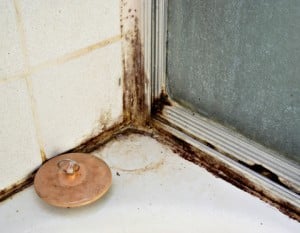 Mold and mildew are serious problems that need to be addressed and removed as quickly as possible from your facility. They are major concerns for any organization because of the health issues associated with their presence. Not only do they give the impression that your facility is not well taken care of, but they pose a real risk for anyone who spends time in your building, including your tenants, your patrons, your customers, your staff, and yourself.
Mold and mildew are serious problems that need to be addressed and removed as quickly as possible from your facility. They are major concerns for any organization because of the health issues associated with their presence. Not only do they give the impression that your facility is not well taken care of, but they pose a real risk for anyone who spends time in your building, including your tenants, your patrons, your customers, your staff, and yourself.
Finding mold and mildew is sometimes tricky because they can be hiding in areas that are not immediately visible: behind paneling, in ceiling tiles, in access areas (like basements or breezeways), and in heating and cooling spaces. To locate where mold and mildew are lurking, check areas of your organization that may be damp and exposed to warmth.
How to Remove Hard Water Deposits
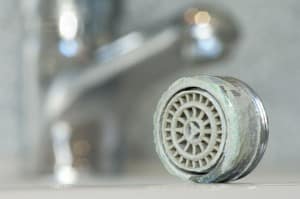 We have all struggled with hard water deposits somewhere in our facility at one time or another. These nuisances are mineral deposits—calcium, lime, and other hard mineral buildup —left over when pure water evaporates. Hard water deposits can leave your surfaces looking dirty, dingy, and gross, giving visitors a poor impression of your organization or business. In some extreme cases, they can even cause expensive damage to appliances.
We have all struggled with hard water deposits somewhere in our facility at one time or another. These nuisances are mineral deposits—calcium, lime, and other hard mineral buildup —left over when pure water evaporates. Hard water deposits can leave your surfaces looking dirty, dingy, and gross, giving visitors a poor impression of your organization or business. In some extreme cases, they can even cause expensive damage to appliances.
Fortunately, with a little bit of cleaning know-how and some helpful cleaning aids, you can bring your surfaces back to their natural glory. Use our guide below to both remove these unsightly stains and prevent them from developing in the future.
Posted in Acid Products, Critical Cleaning, Dishwashing, Food Service, General Cleaning, Janitorial, Swimming Pool Maintenance Tagged Attack Mildew &Stain Remover, Delimer & Scale Remover, Handi-Flush Toilet Bowl Crystals, muriatic acid, Natural Citrus Multi-Purpose Foam Cleaner, stain away, Stainless Steel Cleaner Leave a comment
How to Clean an Industrial Oven
 Your organization should strive to keep your kitchen area clean to cut down on pests and contamination. Part of that is keeping your ovens as clean as possible, checking them, wiping them down, and removing debris that may have accumulated. Adding these tasks to your janitorial routine is beneficial, as good maintenance and cleaning of your oven will help to keep it from needing to be repaired or replaced, prolonging the life and usefulness of this vital appliance. Continue reading
Your organization should strive to keep your kitchen area clean to cut down on pests and contamination. Part of that is keeping your ovens as clean as possible, checking them, wiping them down, and removing debris that may have accumulated. Adding these tasks to your janitorial routine is beneficial, as good maintenance and cleaning of your oven will help to keep it from needing to be repaired or replaced, prolonging the life and usefulness of this vital appliance. Continue reading
5 Reasons Your Hotel Should Provide Amenities Soaps
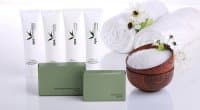 When considering all of the things a business can provide its guests, hotel amenities soaps seem like small items that don’t make that much difference. After all, most people bring their own shampoos and conditioners when they travel. But people sometimes forget items they intended to bring. Then after realizing that they have forgotten something important, these travelers are stuck in a city that they aren’t familiar with in need of daily items that they would have easy access to if they were in their own homes. Your business may easily provide these items, though, solve a problem and make its guests feel more at home, reaping benefits for your organization. Continue reading
When considering all of the things a business can provide its guests, hotel amenities soaps seem like small items that don’t make that much difference. After all, most people bring their own shampoos and conditioners when they travel. But people sometimes forget items they intended to bring. Then after realizing that they have forgotten something important, these travelers are stuck in a city that they aren’t familiar with in need of daily items that they would have easy access to if they were in their own homes. Your business may easily provide these items, though, solve a problem and make its guests feel more at home, reaping benefits for your organization. Continue reading





